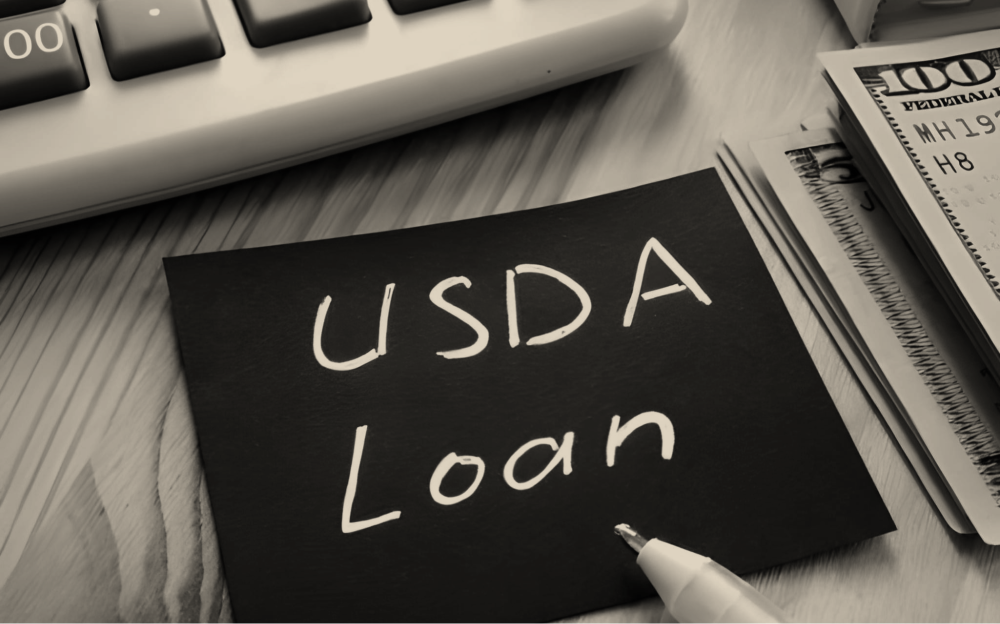Is a USDA Loan Right for You? LA County Rural Homebuyer’s Guide
A USDA Loan Los Angeles County can be the key to achieving homeownership for many rural and suburban buyers. If you are exploring mortgage options, working with a mortgage loan broker Los Angeles can simplify the process, helping you understand eligibility, benefits, and application steps. USDA loans are designed to make homeownership more affordable and accessible, especially for those in rural communities around Los Angeles County. This guide will walk you through everything you need to know.
Understanding USDA Loans
USDA loans are designed to make homeownership more accessible, especially for families in rural communities around Los Angeles County. They provide financial benefits that many other loan types do not, including no down payment and lower insurance fees. Understanding these loans fully can help you decide if they are the right fit for your long-term financial goals.
What Is a USDA Loan?
A USDA loan is a government-backed mortgage program aimed at helping low- to moderate-income buyers purchase homes in eligible rural and suburban areas. Unlike conventional loans, USDA loans are tailored to make homeownership accessible without requiring a hefty down payment. These loans are backed by the United States Department of Agriculture and are designed to support communities in rural regions while providing a cost-effective path to homeownership.
Key Advantages for Rural Homebuyers
Zero Down Payment
One of the most appealing features of a USDA loan is that it does not require a down payment. For many homebuyers, saving for a 3–20% down payment on conventional loans can take years. USDA loans eliminate this barrier, allowing buyers to purchase a home with little upfront cash.Competitive Interest Rates
USDA loans offer lower interest rates compared to conventional loans in many cases. This means lower monthly payments and overall cost savings over the life of the loan.Lower Mortgage Insurance Costs
Unlike FHA loans, which require both an upfront and ongoing mortgage insurance premium, USDA loans only require a modest annual guarantee fee. This can save buyers hundreds of dollars every month.Financing for Closing Costs
Some USDA loans allow buyers to include closing costs in the loan, which further reduces the need for immediate cash on hand.
USDA Loan Eligibility in Los Angeles County
Eligibility for a USDA loan goes beyond just income and location. Lenders also consider your credit history, debt-to-income ratio, and employment stability. Ensuring you meet all requirements increases your chances of a smooth approval process and helps you understand the limits of what you can borrow for your new home.
Income Limits and Household Requirements
To qualify for a USDA loan in Los Angeles County, borrowers must meet income limits based on household size. These limits are designed to ensure that the program assists low- to moderate-income families. Lenders will calculate your household income, including all adult family members’ earnings, to determine eligibility. Meeting the income threshold is essential to securing a USDA loan.
Property Requirements
USDA loans are only available for properties located in eligible rural areas. While much of Los Angeles is urban, the outskirts and certain suburban regions qualify as rural under USDA guidelines. Homes must meet USDA property standards, including being safe, sanitary, and structurally sound. To confirm if a property qualifies, buyers should check the USDA property eligibility map before starting the application process.
Credit Score Requirements
Most lenders require a minimum credit score of 640 to qualify for the automatic USDA guarantee program. However, some lenders may consider lower scores if compensating factors like strong employment history or low debt-to-income ratios are present. Maintaining a solid credit history improves approval chances and helps secure a better interest rate.
Comparing USDA Loans to Other Loan Types
Eligibility for a USDA loan goes beyond just income and location. Lenders also consider your credit history, debt-to-income ratio, and employment stability. Ensuring you meet all requirements increases your chances of a smooth approval process and helps you understand the limits of what you can borrow for your new home.
USDA vs. FHA Loans
While both USDA and FHA loans are designed for buyers who may not have substantial savings for a down payment, there are key differences:
Down Payment: USDA loans require no down payment, whereas FHA loans require at least 3.5%.
Property Restrictions: USDA loans are restricted to rural areas, while FHA loans can be used for properties anywhere in the country.
Mortgage Insurance: USDA loans have lower ongoing fees compared to FHA loans, which include both upfront and monthly premiums.
Credit Requirements: USDA loans generally require a higher minimum credit score than FHA loans.
USDA vs. Conventional (Conforming) Loans
Conventional or conforming loans are typically used for urban and suburban properties and have different eligibility and cost structures:
Down Payment: Conventional loans usually require at least 5–20% down.
Property Location: USDA loans are limited to rural areas, whereas conventional loans can be used anywhere.
Cost Savings: USDA loans may have lower closing costs and eliminate down payment requirements, which can make them a more affordable option for buyers with limited savings.
USDA Loan Costs and Fees
Choosing the right loan can significantly affect your monthly payments and overall cost of homeownership. By comparing USDA loans with FHA and conventional loans, you can better understand which option aligns with your financial situation, long-term plans, and property preferences. This comparison can also highlight hidden costs that may impact affordability.
Typical Closing Costs
Closing costs for a USDA loan are similar to other loans but often lower than FHA or conventional loans. Common fees include:
Loan origination fees
Appraisal fees
Title insurance
Recording fees
Some of these costs can be included in the loan, making it easier for buyers to manage upfront expenses.
Comparing Costs to Other Loans
When comparing USDA loans to FHA or conventional loans, many homebuyers find that the total cost of ownership is lower due to:
Zero down payment
Lower mortgage insurance fees
Potentially lower interest rates
For buyers with limited savings, these cost savings can make a substantial difference in affordability.
How to Apply for a USDA Loan
While USDA loans are generally cost-effective, understanding all fees upfront is critical. Knowing typical closing costs and how they compare to other loan types helps buyers plan for all expenses and avoid surprises at closing. A clear picture of costs also ensures that the loan remains affordable and manageable long-term.
Check Eligibility – Confirm your income level and ensure the property is in an eligible rural area.
Gather Documentation – Collect proof of income, employment history, bank statements, and credit reports.
Pre-Approval – Get pre-approved through a lender to understand how much you can borrow.
Submit an Application – You can apply for USDA loan online to streamline the process and receive guidance from experienced loan officers.
Underwriting and Approval – The lender reviews your application, verifies eligibility, and provides final approval.
Close on Your Home – Sign loan documents, pay any financed closing costs, and take ownership of your home.
Applying online saves time and allows homebuyers to move quickly in competitive markets, ensuring they don’t miss out on eligible properties.
Is a USDA Loan Right for You?
USDA loans are an excellent choice for homebuyers in rural Los Angeles County who may not have substantial savings for a down payment but still want to purchase a home. These loans are particularly beneficial for:
First-time homebuyers looking to enter the housing market without significant upfront costs
Families seeking affordable monthly payments with lower insurance costs
Buyers interested in properties in suburban or rural areas on the outskirts of LA
Conclusion
A USDA Loan Los Angeles County can be an excellent pathway to homeownership for rural and suburban buyers who may not have substantial savings for a down payment. With benefits like zero down payment, competitive interest rates, and lower mortgage insurance, these loans make owning a home more accessible and affordable.
By understanding eligibility requirements, comparing USDA loans to other loan options, and knowing the costs involved, you can make an informed decision that aligns with your financial goals. For a smooth and stress-free experience, it’s important to work with knowledgeable mortgage professionals who can guide you through every step.
Take the first step toward your new home today. Check your eligibility with mortgage loan brokers California, apply for USDA loans online, and get personalized support by reaching out to Contact Us. Your dream of rural homeownership in Los Angeles County can start now.
Frequently Asked Questions
-
USDA loans are designed for homes in designated rural areas, including many LA outskirts and suburban communities. Check the USDA eligibility map before searching for a home.
-
Yes. USDA loans are perfect for first-time buyers because they require no down payment and offer lower fees.
-
USDA loans provide zero down payment, lower mortgage insurance, and often lower interest rates but are limited to rural and suburban properties. FHA and conventional loans have fewer location restrictions but may require higher upfront costs.
-
Yes. Many USDA loans allow buyers to include some closing costs in the loan, reducing the need for upfront cash.
-
Approval can take 30–45 days, depending on documentation completeness, lender processes, and property appraisal.



